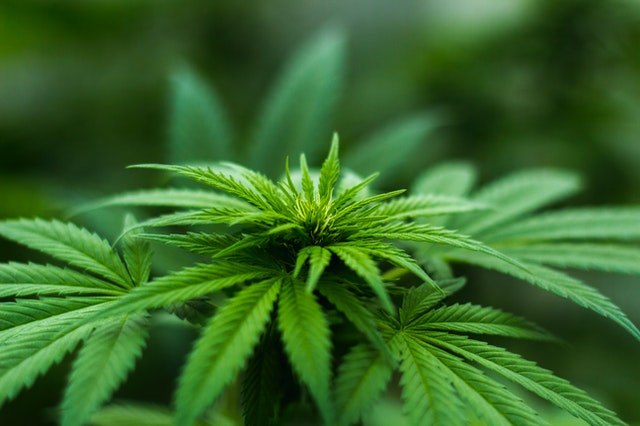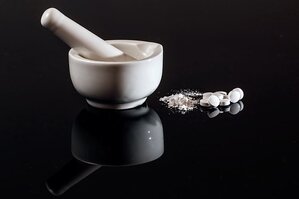N2O Laughing Matter: Risks and Treatment of Nitrous Oxide Abuse
Laughing gas, or nitrous oxide, is a recreational drug that produces a quick, short-lasting high when inhaled. Other street names for the drug are “hippy crack,” “whippets,” or “whippits.” Legally, dentists have been using it as an anesthetic for centuries, and it is also widely found as a propellant for whipped cream. Unfortunately, the latter use gives people easy access to it. According to the 2014 Global Drug Survey, 29.4% of people in the United States have reported to recreationally use nitrous oxide at least once in their lives. Furthermore, concerns of nitrous oxide abuse among adolescents continue to grow. A 2010 study found that the age group of 12–17 years old has the highest abuse rate in the US. Laughing gas abuse has also increased over the course of the COVID-19 pandemic, with people seeking the quick high to dissociate from reality.
Dangerously, as many as 63% of users consider nitrous oxide to be safe. In the short term, inhaling the gas can lead to hypoxia or suffocation. Sudden sniffing death syndrome may also occur in people with heart conditions, as nitrous oxide is known to affect heart rhythm. Long-term abuse of nitrous oxide can lead to a multitude of neurological, mental, and other health symptoms, including myelopathy, peripheral neuropathy, stroke, delirium, depression, and anemia.
Many of the symptoms, especially the neurological ones, stem from vitamin B12 deficiency—nitrous oxide is known to turn vitamin B12 into its inactive form, but the specific mechanisms are more complicated than that. Vitamin B12 is an important cofactor for enzymes involved in myelination (or insulation) of neurons. Cofactors are chemicals that are essential for the activity of the enzymes in the body. Without B12, the myelinating enzyme methionine synthetase (MTR) cannot function, which causes demyelination to occur, resulting in slowing or stopping of nerve signaling. Without MTR activity, build-up of the toxic amino acid homocysteine also occurs, leading to mitochondrial dysfunction, neurotoxicity, increased risk of stroke, heart attack, and/or dementia.
Dangerously, as many as 63% of users consider nitrous oxide to be safe. In the short term, inhaling the gas can lead to hypoxia or suffocation. Sudden sniffing death syndrome may also occur in people with heart conditions, as nitrous oxide is known to affect heart rhythm. Long-term abuse of nitrous oxide can lead to a multitude of neurological, mental, and other health symptoms, including myelopathy, peripheral neuropathy, stroke, delirium, depression, and anemia.
Many of the symptoms, especially the neurological ones, stem from vitamin B12 deficiency—nitrous oxide is known to turn vitamin B12 into its inactive form, but the specific mechanisms are more complicated than that. Vitamin B12 is an important cofactor for enzymes involved in myelination (or insulation) of neurons. Cofactors are chemicals that are essential for the activity of the enzymes in the body. Without B12, the myelinating enzyme methionine synthetase (MTR) cannot function, which causes demyelination to occur, resulting in slowing or stopping of nerve signaling. Without MTR activity, build-up of the toxic amino acid homocysteine also occurs, leading to mitochondrial dysfunction, neurotoxicity, increased risk of stroke, heart attack, and/or dementia.
Image Source: Monstera
The guidelines for treating symptoms of nitrous oxide abuse are unclear. Because many of the complications of nitrous oxide use are related to vitamin B12 deficiency, symptoms such as megaloblastic anemia and some neurological conditions can be alleviated by vitamin B12 supplementation. Still, some neurological damage may be permanent, especially in those who continue to use the substance. Nitrous oxide itself is also neurotoxic via other mechanisms which have yet to be fully determined. Thus, abusers do not necessarily show the exact same symptoms as patients with vitamin B12 deficiency and may not always improve with vitamin B12 supplementation. Recovery speed and post-treatment vary from person to person. Lower severity and duration of the neurological damage, younger age, earlier treatment, and absence of anemia generally lead to better outcomes.
It is challenging to detect nitrous oxide abuse. The substance quickly clears out of the body, and very few, if any, formal screening tools can accurately identify and quantify the substance in the body. Symptoms like shortness or irregularity of breath, cough, limb weakness, paresthesia, gait instability, hallucinations, confusion, short-term memory problems, and mood disorders can indicate nitrous oxide abuse. Adolescents may also complain of abdominal pain, constipation, issues with urination, or involuntary movement in the limbs, rather than sensory changes in the limbs, which occur in adults. Considering the growth of adolescents abusing nitrous oxide and the possible resulting neurological damage, it is especially important to educate youth who are still undergoing brain development about the risks of using nitrous oxide.
It is challenging to detect nitrous oxide abuse. The substance quickly clears out of the body, and very few, if any, formal screening tools can accurately identify and quantify the substance in the body. Symptoms like shortness or irregularity of breath, cough, limb weakness, paresthesia, gait instability, hallucinations, confusion, short-term memory problems, and mood disorders can indicate nitrous oxide abuse. Adolescents may also complain of abdominal pain, constipation, issues with urination, or involuntary movement in the limbs, rather than sensory changes in the limbs, which occur in adults. Considering the growth of adolescents abusing nitrous oxide and the possible resulting neurological damage, it is especially important to educate youth who are still undergoing brain development about the risks of using nitrous oxide.
Featured Image Source: haidi2002
RELATED ARTICLES
|
Vertical Divider
|
Vertical Divider
|
Vertical Divider
|






